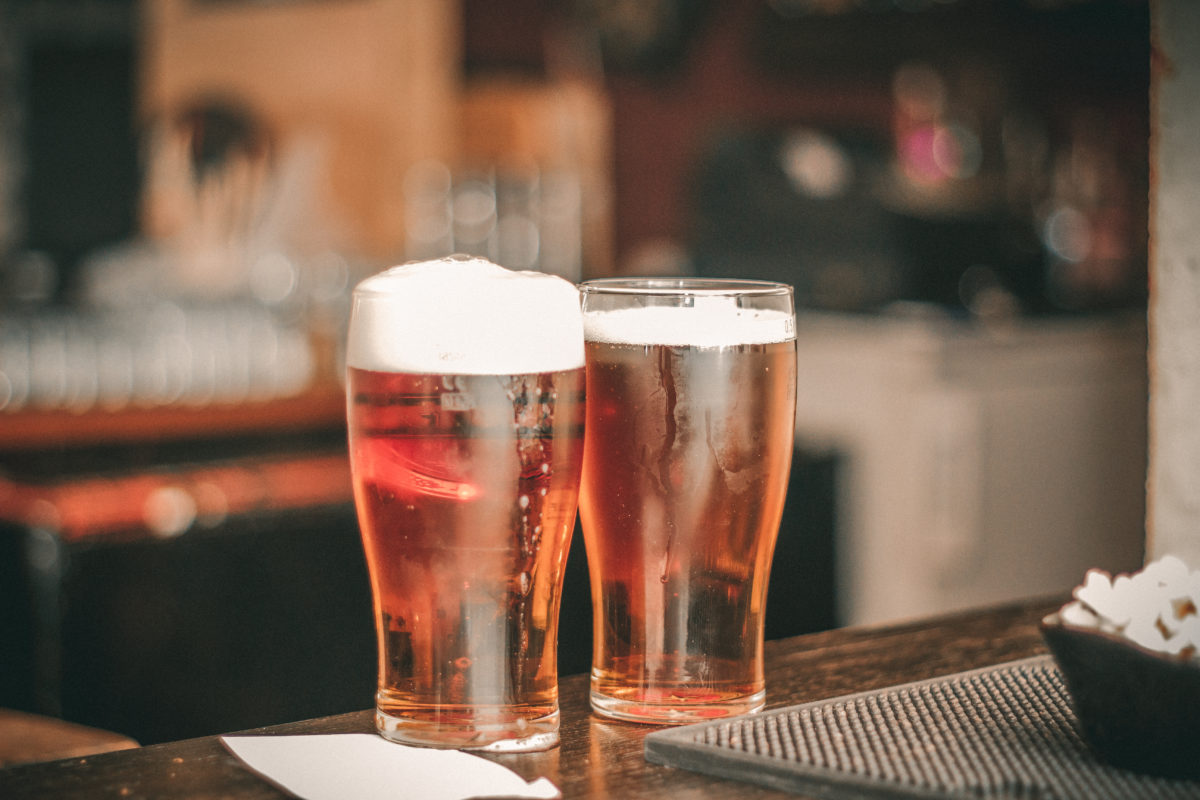
06 Mar Alcoholism in Georgia: Breaking Down Drinking Patterns
Table of Content
Alcohol consumption, for better and worse, has played an integral part in just about every nation’s cultural fabric since the dawn of man. This universality, this overarching reach spanning the entire globe, resulted in it being the most abused drug in history, with no nation free of the scourge of alcoholism. To this day, alcohol retains that ignominious status as the most used and abused drug worldwide.
Every state in the U.S. must wrestle with the question, “How do we curb alcoholism? How do we fight this disease?” Although Georgia has lower rates of heavy drinking and binge drinking compared to the national average, it is no exception to this matter. It must also figure out ways to battle alcohol abuse.
This is a grim and exceptionally arduous task for any state to take on. The task is made worse by the ripple effects of alcohol abuse such as increases in crime, poverty and mortality rates. Whether you or a loved one is dealing with alcoholism, remaining informed about Georgia drinking statistics and treatment options can aid your preparation for the battle to come.
Alcohol Abuse Statistics in Georgia
Below are some general statistics about alcohol abuse within the state:
- Experts estimate that healthcare related to alcohol abuse costs the nation upwards of $28 billion per year, with an additional quarter trillion dollars lost as a result of crime and work productivity.
- In Georgia, approximately 15% of that state’s population engages in binge drinking at least one time per week, making it the 12th highest average in the country.
- Every year, alcohol is responsible for the deaths of at least 2,000 Georgians with an additional three hundred as a result of drunk driving.
- In 2016 alone, there were upwards of 19,000 DUI arrests throughout Georgia.
- According to Georgia’s head of law enforcement, one of every five traffic fatalities is directly related to alcohol consumption.
- Over half of Georgian citizens who sought treatment for addiction stated that the primary drug they were abusing was alcohol.
- This number multiplies when seen in a secondary or complimentary light to other drug treatments such as marijuana or cocaine.
Negative Health Effects of Alcoholism
There are a whole host of tertiary issues that come along with alcohol abuse that most overlook when discussing statewide alcohol abuse statistics, especially in light of fatalities and healthcare. While a relatively small amount of Georgians die directly because of alcohol, a considerable amount of the population is directly affected by adverse health byproducts caused by drinking. Heavy drinking increases the odds of sexual assault, STDs, and unwanted pregnancies. Besides the direct consequences, there are ripple effects that spread out and impact families, friendships, jobs and communities. Because of this, we should be alarmed by the increasing rates of alcoholism within Georgia, because this is an issue that affects every community, and as a result, the entire state.
Further, according to, to the National Institute on Alcohol Abuse and Alcoholism, regular alcohol consumption has been shown to increase the likelihood of the following health issues in both the short and long-term:
- Alcohol Dependency – This is the most obvious factor of chronic drinking. Physical, emotional or mental dependence is far more likely the more you drink. Withdrawals from alcohol are especially brutal, and in some cases fatal, and are manifested in: anxiety, agitation, nausea, sweating, seizures, rapidly beating heart, shaking, seizures and delirium.
- Brain Disease – Alcohol impairs the CNS (Central Nervous System) and hampers the brain’s ability to process information and form long-term memories. This deterioration further affects decision making and rationalization. Over a long-term period, heavy alcohol use can severely damage the frontal lobe of the brain, the area that is accountable for short-term memory creation, judgment, and emotional control. Permanent brain damage is undoubtedly a consequence of chronic drinking.
- Liver Disease – An alcohol-related liver disease is responsible for nearly 40% of all liver disease fatalities within the state. Long-term abuse significantly increases the risk of liver disease and permanent liver damage. Alcohol inflames the liver and hampers its ability to break down and remove harmful substances from the body. As scar tissue from inflammation forms, the liver’s ability to clear toxins severely diminishes and continues to do so until it shuts down altogether.
- Heart and Lung Damage – Coronary heart disease is the most common type of heart disease found in Georgians and may often result in sudden death due to a heart attack. Chronic drinking promotes fat accumulation on the walls of arteries within the heart and causes the artery to constrict, thereby decreasing the oxygen supply and nutrient flow to the heart muscle. Alcoholism is responsible for an assortment of circulatory system problems such as heart attack, high blood pressure, heart failure, heart disease irregular heartbeat and stroke.
- Sugar levels and Pancreatitis– The pancreas helps your body regulate insulin in relation to glucose. Alcohol causes inflammation that can turn into pancreatitis. As the pancreas ability to function diminishes, drinkers find themselves at higher risks of hypoglycemia, hyperglycemia, diabetes and pancreatic cancer.
Teenage Alcohol Abuse in Georgia
The teenage years are a vital period of growth as young people make the transition from being a child to an adult. At this time, young people begin to seek independence away from the protective embrace of their parents. While small acts of rebellion or defiance are a fundamental part of “leaving the nest,” this questioning of the natural order of things has results that are both positive and negative. One such consequence of pushing boundaries is teenage partying and underage drinking.
Teenagers brains and bodies are rapidly developing and changing, factor this in with their lack of built up tolerance to alcohol, and it is easy to understand why teenagers are far more susceptible to the more dangerous repercussions of alcohol abuse than their adult counterparts. Although the percentage of alcohol abusers within the teenage population is lower, alcohol poses a grave danger to not only developing teenagers but to the state as a whole. An estimated 700 teenagers enter treatment for alcohol abuse annually, accounting for 4% of all treatment admissions statewide. An estimated 300,000 teenagers drink at least one time every single year. A CDC study titled: A Georgian Youth Risk Behavior Surveillance the found that:
- 59.2% of teenagers had at least one drink of alcohol on one or more days during their life.
- 18.1% of teenagers had their first drink of alcohol, other than a few sips, before age 13.
- 27.9% of teenagers had at least one drink of alcohol on one or more occasions in the past 30 days.
- 13.3% of teenagers had five or more drinks of alcohol in a row (binge drinking) in the past 30 days.
Teenage Alcohol Abuse- The Cost To The State
In 2014, a study conducted throughout the state revealed that underage drinking cost the state more than a billion dollars annually as a result of medical care and work loss. These numbers are staggering, especially when you consider things such as fetal alcohol syndrome alone cost the state nearly $40 million. According to PIRE (Pacific Institute for Research and Evaluation), underage drinking plays a factor in all of the following statistics annually:
- More than 800 teen pregnancies are a byproduct of alcohol consumption.
- 22,000 teens engaging in high-risk sex (out of wedlock or no contraception used) were attributable to underage drinking.
- At least 30 traffic fatalities and 1500 nonfatal traffic injuries may be attributed to underage drinking.
- Alcohol is a factor in approximately 40 homicides; 15,000 nonfatal violent crimes like robbery, assault, and rape; 30,000 property crimes such as theft, grand theft, burglary and larceny; and 600,000 public order crimes such as loitering, curfew violations, disorderly conduct, and vandalism.
Why Georgian Teens Engage in Alcohol Abuse
When attempting to decipher patterns across spectrums, it is critical to search for reasons as to why these patterns form. So, in the case of alcohol abuse in teenagers who eventually become adults, it is vital to understand the causes for this behavior. While these following factors may be true for alcoholics across the board, they are especially pertinent in answering why Georgian teens decide to start drinking:
- Curiosity – Humans often learn by trial and error. A developing child sometimes must touch a stove to fully understand that it is hot and find out why their parents warn them not touch it. Teenagers are especially observant of the world around them. As their brain rapidly develops, it is absorbing and processing a constant stream of new information. In the case of alcohol, they have seen drinking in the movies or on television, they have watched their parents or friends, or they might have heard stories about drinking. After a while, simply seeing or hearing is not enough, they have to try it for themselves. They want to know what it actually feels like rather than living vicariously through others.
- Peer approval – Humans are social creatures that thrive in communities. Studies have shown that we wither in isolation and require others to learn and grow as people. In high schools, partying and drinking underage becomes a part socialization of sorts that takes place in almost every teenage community across the country. Humans, especially teenagers, crave approval and generally are loathe to single themselves out from the pack. So, kids see their friends, peers, older siblings drinking and do not want to be seen as uncool. Their desire for acceptance amongst their peers causes them to engage, rather than be left out.
- An act of rebellion – Teenagers, some more than others, reach a point where an authority figure in their life tells them to avoid something, and their immediate reaction is not to heed the advice. They see adults or peers drinking; they think of themselves as young adults so conclude that they too are mature enough to handle alcohol. This act of defiance to their parent’s and society’s rules is often manifested by having a party or breaking into their parent’s liquor cabinet.
- Pressure from peers – Many of us are bad at saying no. We do not want to let down our friends, coworkers, family because we fear them thinking less of us. Teens are especially susceptible to groupthink. They feel an intense pressure to conform, so as not to stick out. The two most significant fears for teenagers are isolation and rejection, because of this they are far more likely to relent to their peers, even if they know something might be a bad or dangerous idea.
- Sheer Boredom – boredom is an essential tool for the developing brain, it stimulates daydreaming, the imagination and helps build the creative centers of the brain. On the flipside, boredom often results in bad decision making by those who can not stand the lack of stimulation. We live in an instant gratification culture, everything can be had at the touch of a button in days if not hours, and as a result, many teenagers do not have the patience to wait until they can legally drink. They want to see what it’s like, they’re bored and they want to find out right now. When left to their own devices, teenagers are more likely to make poor decisions when they are not active.
- Coping Mechanism – For most people, the teenage years are filled with both good and bad. Because their hormones and bodies undergo drastic changes, the bad times are very bad and can be tremendously taxing on the mind and soul. Because of their youth, they have not yet built up callouses to life; they are not emotionally prepared to deal with difficulties of adulthood and all of the societal pressures that come part and parcel. Overwhelmed by pain or emotional suffering, many teenagers turn to alcohol as a coping mechanism, a way to mask their hurt. Alcohol allows them to escape their world, however momentarily.
What Can We Do in Georgia?
The state government is already making a concerted effort to fight the dangers of alcoholism in adults and teenagers. Therefore, it is vital that we as a community, as friends, as family rally alongside those who struggle with alcohol abuse. It is vital that we continue educating Georgians, especially teens, on the potential dangers of irresponsible drinking. If you or a loved one find yourself in the clutches of alcohol addiction, there are a whole host of inpatient and outpatient detox and recovery centers throughout the state that can help you in this fight. Do not be afraid to reach out to medical professionals and get the help that you or they so desperately need.
Sources:
Kanne, Judi. “Breaking Down Drinking Patterns in Georgia.” Georgia Health News. 17 May 2015. 14 Mar. 2019. http://www.georgiahealthnews.com/2015/05/breaking-drinking-patterns-georgia/
“Binge Drinking in Georgia in 2018.” America’s Health Rankings. 14 Mar. 2019. https://www.americashealthrankings.org/explore/annual/measure/Binge/state/GA
“Adult Alcohol Use Data Summary.” The Georgia Department of Health. July 2012. 14. Mar. 2019. https://dph.georgia.gov/sites/dph.georgia.gov/files/related_files/site_page/2011%20Adult%20Alcohol%20Data%20Summary.pdf






No Comments